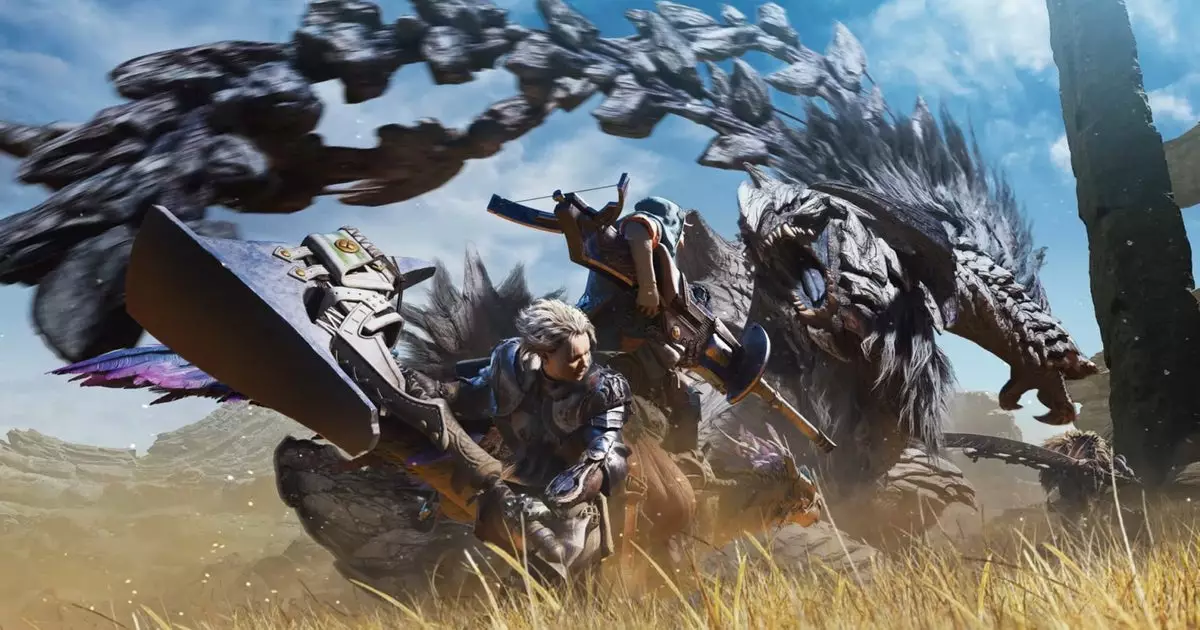The revered Monster Hunter franchise has cultivated a unique niche within the realm of action games for over a decade, captivating gamers with its immersive world and diverse mechanics. As it continues to evolve, with its latest installment Monster Hunter: Wilds, players can expect to encounter new types of tinctures and creatures, including wyverns, toad monsters, and myriad arachnids. However, amidst the introduction of these fantastical elements, the weapons themselves reveal a conservative approach to gameplay. Despite the allure of visually striking equipment, the underlying weapon types remain largely consistent with previous offerings, echoing their origins from classic versions like Monster Hunter Freedom 2.
Consistency Over Novelty: A Deliberate Choice
Capcom’s strategic focus on uplifting and rebalancing existing weaponry rather than introducing radically new ones has invited both praise and criticism from the gaming community. As Wilds’ director, Yuya Tokuda explains, the philosophy behind this decision stems from a desire to maintain harmony within the game’s arsenal. The current weapon types, totaling 14 distinct categories, range from the user-friendly Greatsword to the more advanced Hunting Horn. While this established lineup has served players well in the past, there remains a palpable tension in the air: can the introduction of a 15th weapon truly enhance the gaming experience without overwhelming or detracting from the established ones?
Tokuda’s insights highlight the complexities of weapon design in Monster Hunter—a balancing act of innovation without compromise. As the team considers fresh combinations and enhanced moves within existing weapons, the prospect of adding a new type enters a daunting landscape of design challenges. With each weapon’s unique identity and function, the potential for overlap and redundancy looms large. However, the insistence on refining what exists rather than stretching resources too thin suggests a commendable commitment to quality and cohesiveness in gameplay.
The delicate task of weapon balance extends beyond mere aesthetics. Monster Hunter’s arsenal is crafted not only with skill and power in mind but also with the overarching goal of providing an enriched player experience. Each weapon requires mastering and harnessing an intricate dance of combos and moves. Tokuda emphasizes the necessity for “new depth,” where reimagined mechanics can breathe renewed life into familiar weapon categories. He affirms that focusing efforts on enhancing existing options often yields a far richer player experience than simply introducing a new weapon type that may not fully integrate into the already established hierarchy.
Compounding these challenges is the consideration of what elements to carry over from the Iceborne expansion available in Monster Hunter: World. The expansion was designed for veteran players with a solid grasp of combat basics, adding layers of advanced techniques to already beloved weapons. As Wilds navigates this legacy, the design team must juggle maintaining the integrity of the game while ensuring new and returning players can find enjoyment and growth within its varied systems.
One intriguing aspect lies in the design philosophy regarding weapon creation: each one must derive from the monsters inhabiting the Monster Hunter universe. This unique constraint imposes its own limitations and inspires creativity simultaneously. The whimsical suggestion of introducing fantastical creations—such as a wyvern made entirely of balloons or an insect monster with geometric designs—illustrates the opportunity for innovation. However, these playful concepts must also conform to practical functionalities in gameplay.
As the franchise evolves, it raises the question of how far Capcom might take the weaponization of monsters. A balance of humor, practicality, and impressive design is vital. Will the developers find ways to both satisfy the imaginations of their players while crafting entirely unique instruments of destruction? By harnessing the potential of their imaginative creatures while staying rooted in solid gameplay mechanics, Capcom has the opportunity to further cement Monster Hunter’s legacy.
In sum, Monster Hunter: Wilds offers an engaging exploration of familiar gameplay within a rich ecosystem of new monsters and habitats. Yet, questions remain regarding the evolution of weapons. As players rush to reap the benefits of existing arsenals, the onus falls on Capcom to strike a delicate balance between maintaining tradition and encouraging innovation. Through careful rebalancing, thoughtful design, and the potential introduction of creativity within constraints, the indomitable spirit of Monster Hunter will continue to captivate audiences worldwide for years to come.


Leave a Reply